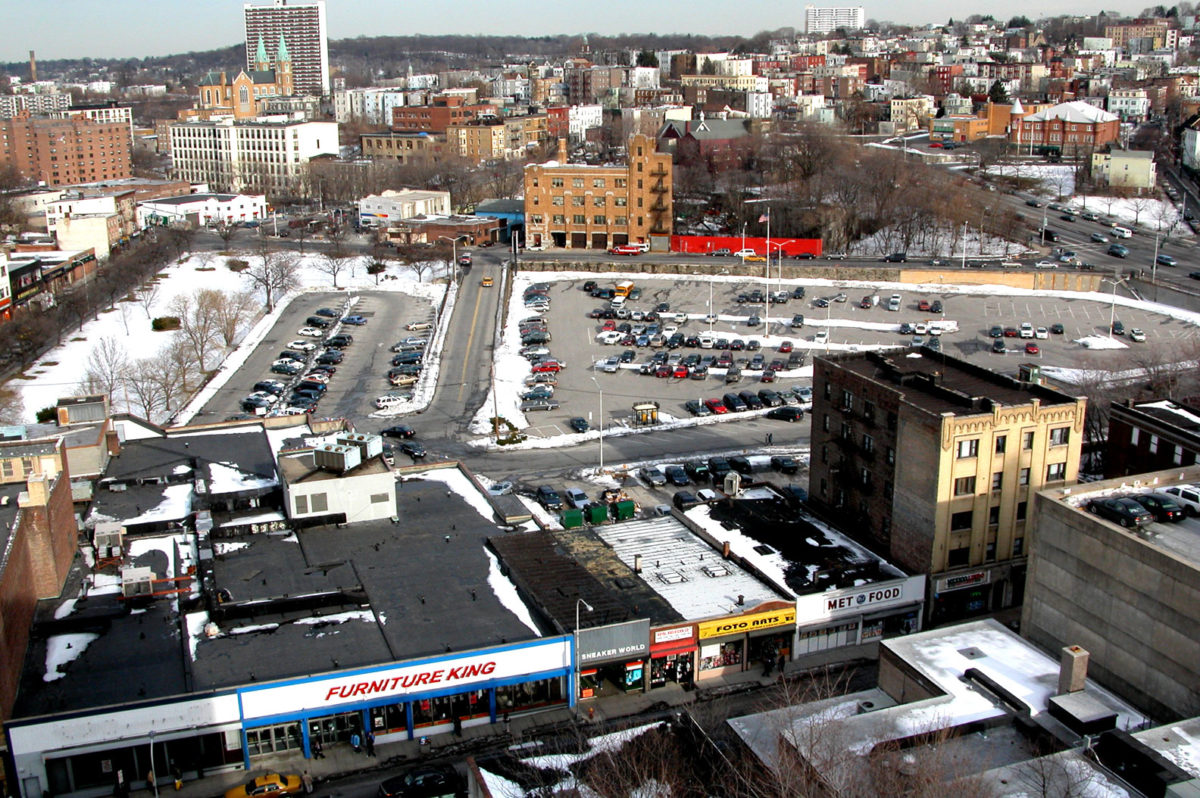An incentive tucked into the 2017 GOP-led tax cut bill could help drive investments to low-income areas in Westchester County and across the country ”” but municipal and economic development officials are still taking stock of the benefits of the program as it gets off the ground.
The so-called “opportunity zones” are a small part of the Tax Cuts and Jobs Act of 2017. The basic idea of the program is to drive investment to low-income areas by providing favorable tax treatment to investors.
The possibilities for investment are somewhat broad ”” including seed money for startup companies that operate in the designated zones ”” but the tax incentive is seen as particularly appealing to the real estate industry.
Investment banks, real estate funds and startups have already rushed into the market. The Wall Street Journal reported in October that sales of development sites in the 8,700 zones nationwide increased 80 percent in the first three quarters of 2018 year over year.
Treasury Secretary Steven Mnuchin has predicted the zones could drive $100 billion in capital investment by opening up “lots of capital that was tied up that never would have been sold to reinvest in these communities,” he told The Hill newspaper.
The zones, which were chosen from recommendations by each state government, are set by Census tracts and cover all 50 states, Washington D.C. and U.S. territories.

In Westchester, the zones cover a diverse range of communities. There are stretches of downtown blocks in the county”™s four most populous cities in Yonkers, New Rochelle, Mount Vernon and White Plains. The zones include parts of the Long Island Sound communities of Port Chester and Mamaroneck, as well as along the Hudson River in the villages of Sleepy Hollow and Ossining and city of Peekskill. In northern Westchester, designated space can be found in Mount Kisco, Bedford Hills and Shrub Oak.
New York state has 514 tracts total, which were chosen based on recommendations from local input and the state”™s regional economic development councils.
The program allows anyone to invest in each tract through newly created “opportunity funds.” The investment funds can only come from capital gains, such as from selling a home or a stock share at a profit. Ninety percent of a fund”™s investments must go to a qualified opportunity zone.
In an example from the Urban-Brookings Tax Policy Center, an investor with a $500,000 profit on the stock market could then invest the money into an opportunity fund. In turn, the fund invests the money into one of the zones. The investor can delay capital gains tax on the money until 2026. If he or she holds the investment for seven years, 15 percent of the total tax on the capital gains can be avoided. If the investment is held for 10 years, investors can exclude from tax any capital gains from the investment itself. That means if he or she sells their share of the fund for $600,000, the $100,000 gain could be excluded from tax.
The Economic Innovation Group, a Washington, D.C. think tank, first championed the concept. The group”™s President and CEO John Lettieri called the program the “most innovative and ambitious federal attempt to encourage long-term private investment in low-income communities in at least a generation,” in testimony to the U.S. Senate in October. The idea has some bipartisan support. U.S. Sen. Cory Booker, a New Jersey Democrat, sponsored earlier legislation for opportunity zones, arguing they could drive billions in investment to underserved communities in his state.
The Tax Policy Center, meanwhile, argued in one analysis that the program “opens the door to big profits for both investors and syndicators, even as the social benefits of the initiative are unclear at best.”
Goldman Sachs Group Inc., according to a report from Bloomberg, started setting up opportunity funds just days after the tax bill passed. Online real estate investment platforms, such as Fundrise, have launched opportunity funds as well.
RXR Realty, a development firm that is New Rochelle”™s master developer, is seeking investors for a $500 million opportunity fund, Bloomberg reported in August. RXR could be in a good position to capitalize on the incentive program, since it already has built apartments in areas now designated as opportunity zones throughout the tristate, including in Westchester.
“One of the things that”™s particularly attractive about the opportunity zone program is, in the past, we had to convince capital to look at these areas, but now capital is asking us to target these areas,” RXR Executive Vice President Seth Pinsky told the online business publication Bisnow. “A lot of people are looking into the opportunity zone program as potentially a very valuable opportunity.”

In New Rochelle, RXR is building a $300 million, two-tower apartment complex at the intersection of Church and Division streets, an area now designated as an opportunity zone. The development is expected to build more than 700 apartments between the two towers, along with about 25,000 square feet of retail space on the main floor.
Luiz Aragon, New Rochelle”™s development commissioner, said city officials are optimistic about the opportunity zones program, “knowing the concept here is to empower the flow of capital into underserved communities across the country.”
“The issue,” he said, “is that this is a process and we”™re going through the process now to understand what exactly the benefits are. We”™re going to understand better once a couple projects have gone through the process.”
In Yonkers, the city has three designated tracts focused mostly in the southwest edge of downtown. The city”™s opportunity zones include Chicken Island, a 6-acre undeveloped parcel where the city has been trying to find the right development project and builder for more than a decade. At the end of October, the city announced developer AMS Acquisitions had bought the land and planned to build a mix of apartments, a hotel and retail and office space on the lot.
Wilson Kimball, commissioner of planning and development for Yonkers, said the city views the opportunity zone tax incentive as another tool to attract investment, along with local IDA incentives and state grants.
The city has already received calls about the incentive, she said, adding that “as they roll out the rules and regulations, I think people will be feeling more and more confident in what they can invest in and how they can do it.”
In Sleepy Hollow, the designated opportunity zone encompasses much of the village, stretching from the riverfront to Route 9, and including all of the Beekman Avenue central district. It appears to include the former GM assembly factory, a 67-acre site where a joint venture between SunCal and Diversified Realty Advisors is leading a billion-dollar redevelopment that will include homes, apartments, a 140-room boutique hotel and retail and office space.
Home construction has already started on the site and it”™s unclear how, or if, the designation would impact future phases of the development. Reached by the Business Journal about the opportunity zone, a project spokesperson said “we”™re confident that Sleepy Hollow’s designation as an opportunity zone offers potential benefits to the village, and we will continue to monitor any opportunities related to the development.”
Similarly, village officials still need to study what exactly the designation could mean for Sleepy Hollow, but Village Administrator Anthony Giacco said it could “help generate interest in the village from developers. We also may be able to use it as a marketing tool to attract business.”
The opportunity zones “certainly create a vehicle through which new sources of funds can be found to support community revitalization in the Census tracts,” said Kim Jacobs, the president and CEO of Community Capital New York, a nonprofit alternative lender headquartered in Elmsford.
As a certified Community Development Financial Institution (CDFI), Community Capital and the opportunity zone program share a stated goal of driving investment to low-income communities. But Jacobs said the nonprofit lender is still evaluating how to best operate within the program. One possible approach, Jacobs said, would be to serve in more of an advocacy role, pushing to ensure opportunity zone investment creates local jobs and housing that benefits the community.
“My organization is taking a look at how we might be able to be an effective conduit between private investors and needed investments in the designated areas,” Jacobs said. “Across the board, CDFIs share a concern that the benefits of these zones accrue not only to the investors, but also to those who live and work in the zones.”




















MAGA